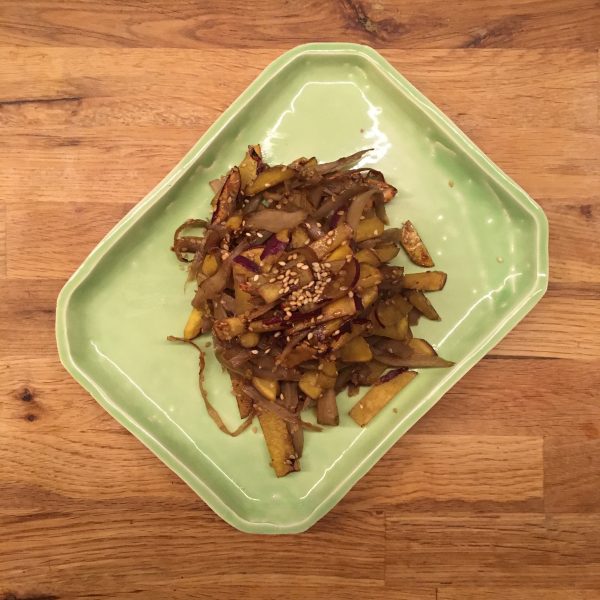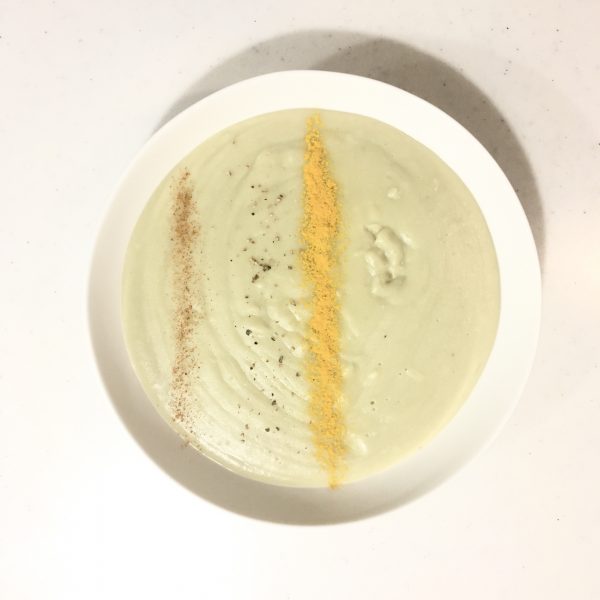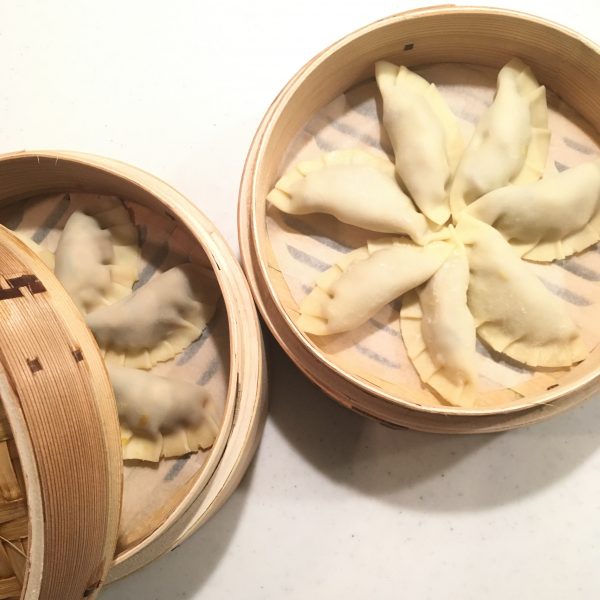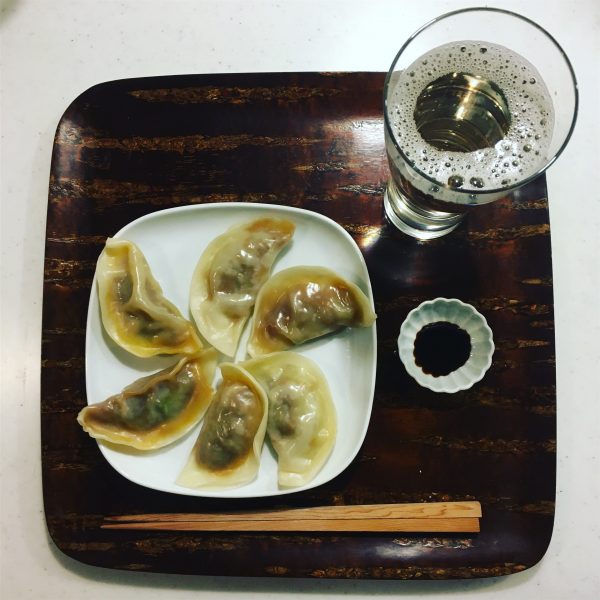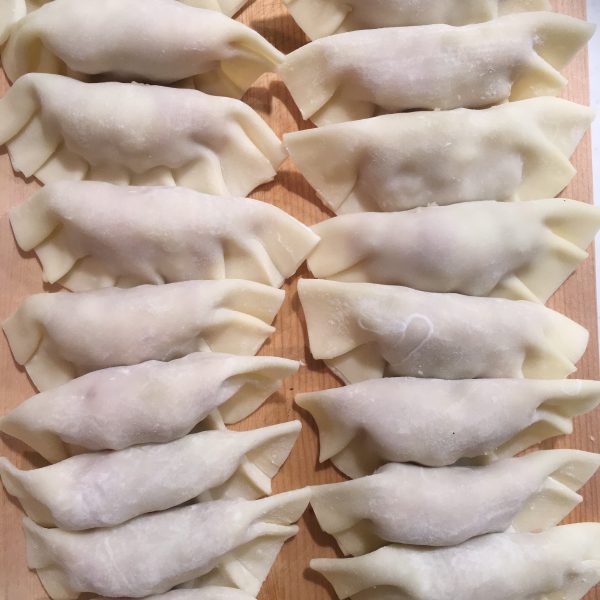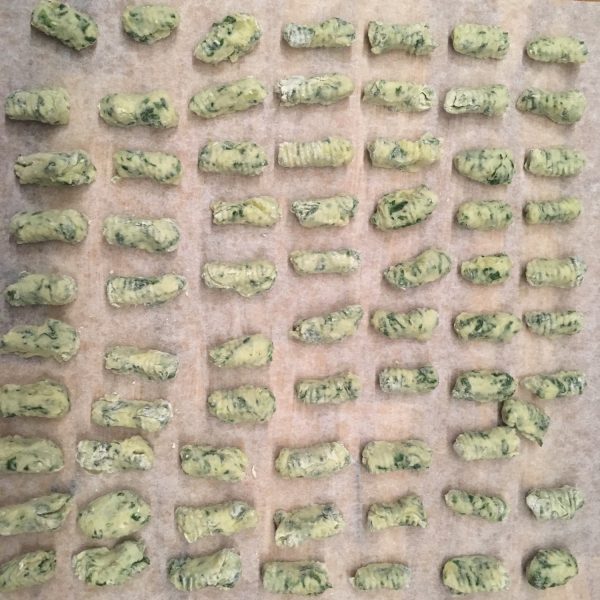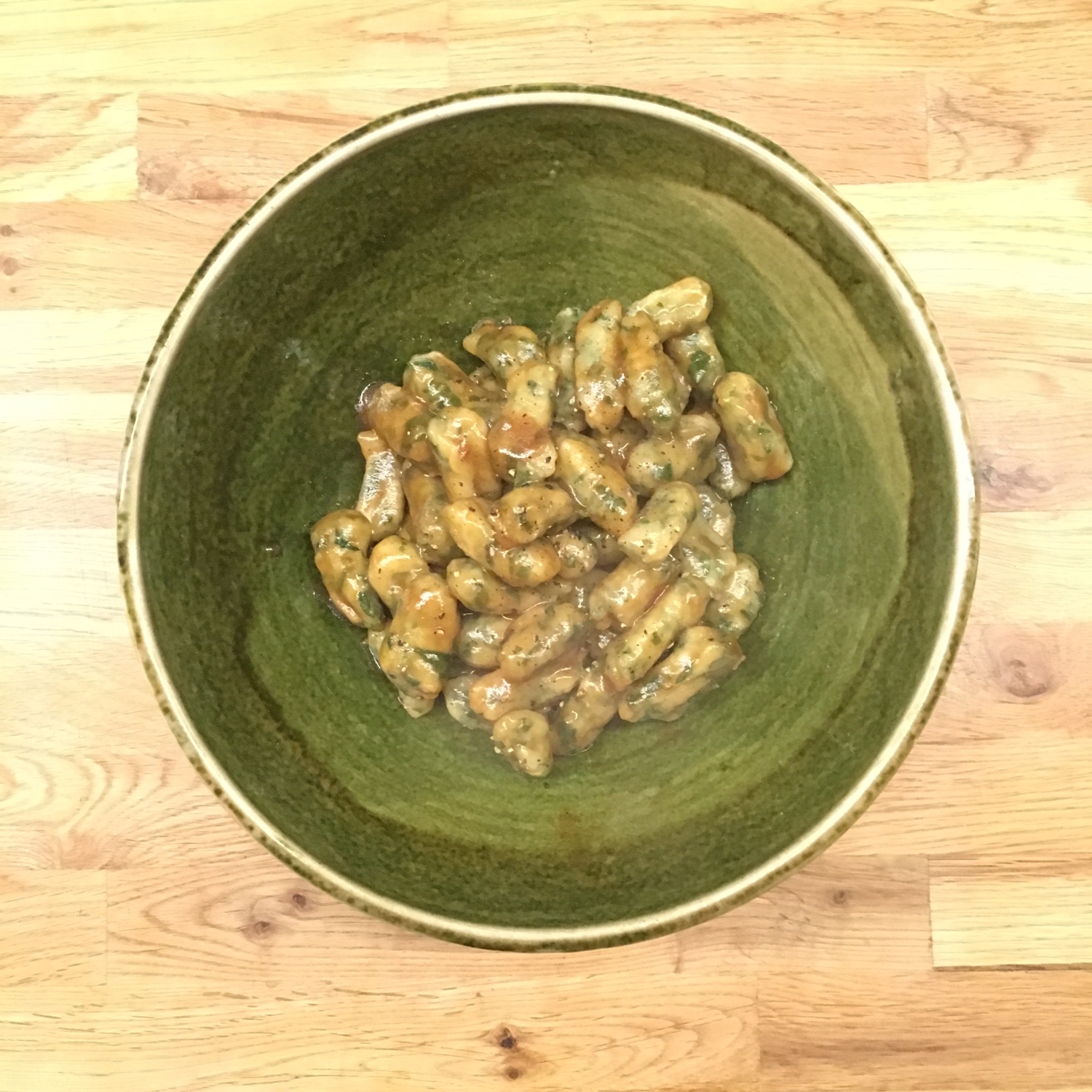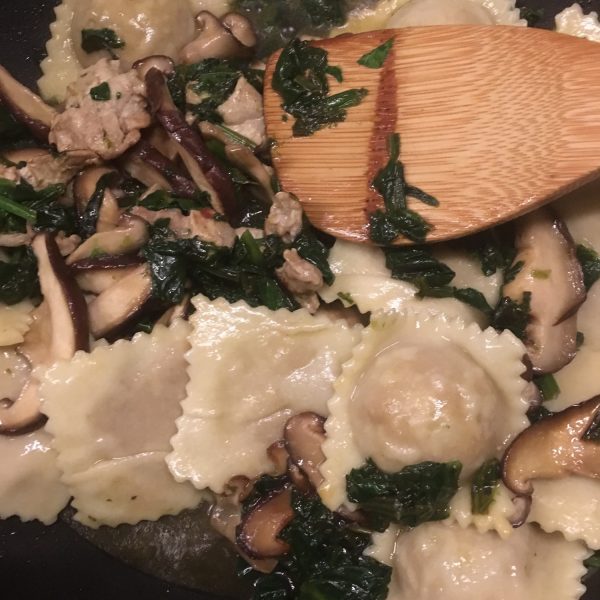By now you must know that I love ravioli, that I love both making and eating them. With the end of year/new year holidays in Japan, most of the farmers market were off until today, so I had to buy some long lasting vegetables that would last 7-10 days and enough for having friends at home and unscheduled meals to cook, just in case… so I packed on shiitake, spinach, sweet potatoes, daikon, cabbages and carrots mainly. So when I wanted to make ravioli I was a bit falling short of options at first… but then I decided to use the ravioli recipe I learned in Florence last year: a base of potato and a sauce with mushrooms. I just twisted the recipe enough to make it Japanese style: filling of Japanese sweet potato and soya sauce, and the sauce with shiitake, spinach and a bit of grilled pork for those who like it. The result was really up to my expectations, even though I could have added a little more soya sauce. But each vegetable flavor and texture was remarkable and I and A. were both very happy with the result. So here is my recipe:
Sweet potato ravioli (2-4 servings depending on serving size, for it was 4)
For the pasta as usual:
– 100g of flour
– 1egg
– a bit of olive oil, a bit of salt
Mix all and knead until soft. Wrap and leave to rest for 30-90min.
For the filling:
– 2 medium sweet potatoes
– 2tbs of soya sauce
Boil them, when soft, drain, peel, and mash. Add a bit of water if too dry.
For the sauce:
– 1 bundle of spinach
– 4-6 large shiitake
– olive oil to your liking
– thin slices of pork if you like
Wash the vegetables, chop the spinach and slice the shiitake. In a heated pan with olive oil cook the vegetables, add the pork if you want. Add a bit of water if too dry. Keep.
Roll the dough and fill the ravioli. I used a 12-ravioli rack which has fairly large size ravioli (the dough quantities make for two racks: 24 ravioli). Mezze lune are also easy to make as in the recipe here. Fill them and boil them. Once they come to the surface take them out and add to the sauce. It doesn’t matter if a bit of cooking water comes too, on the contrary. Stir gently to cover the ravioli with the sauce and serve to eat right away.
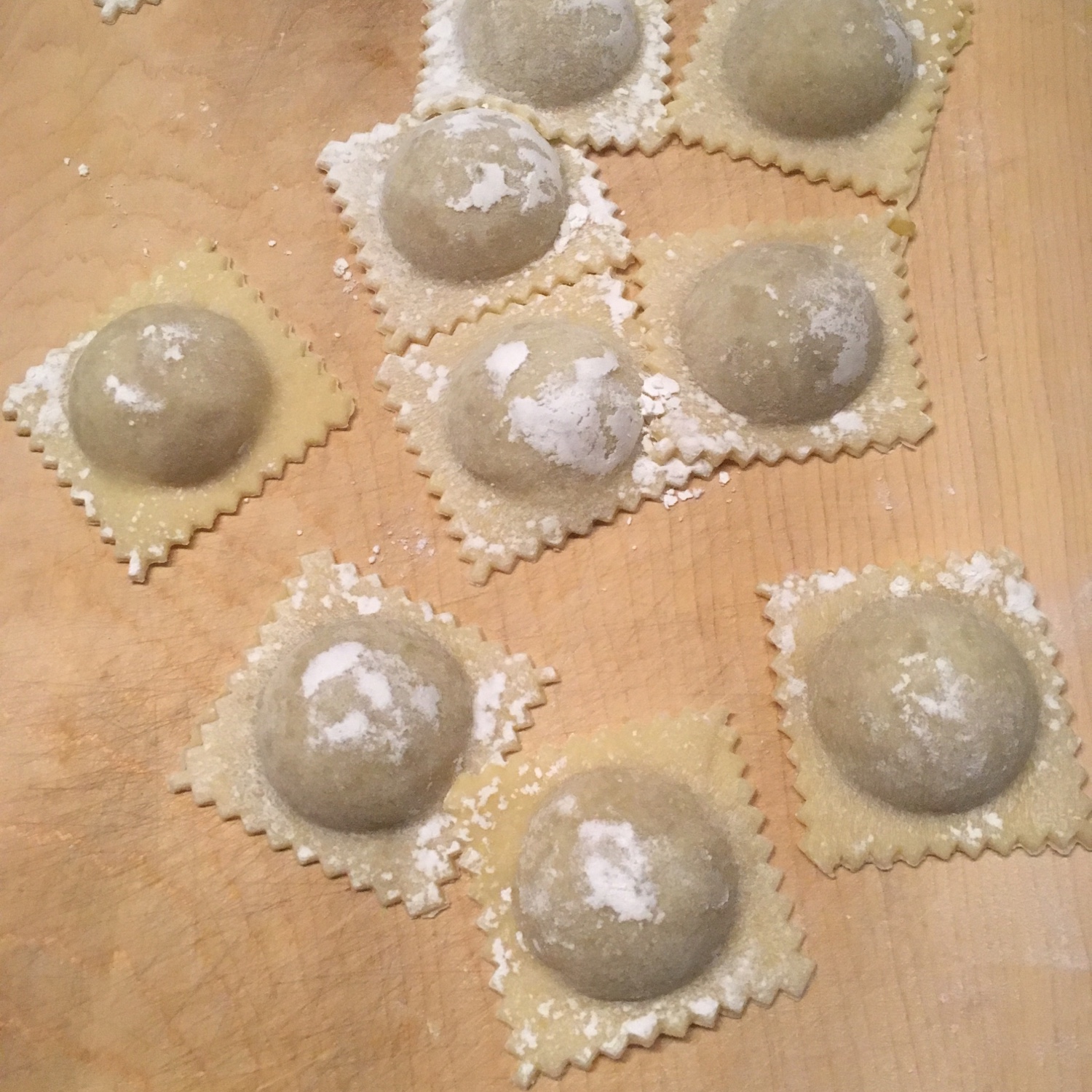
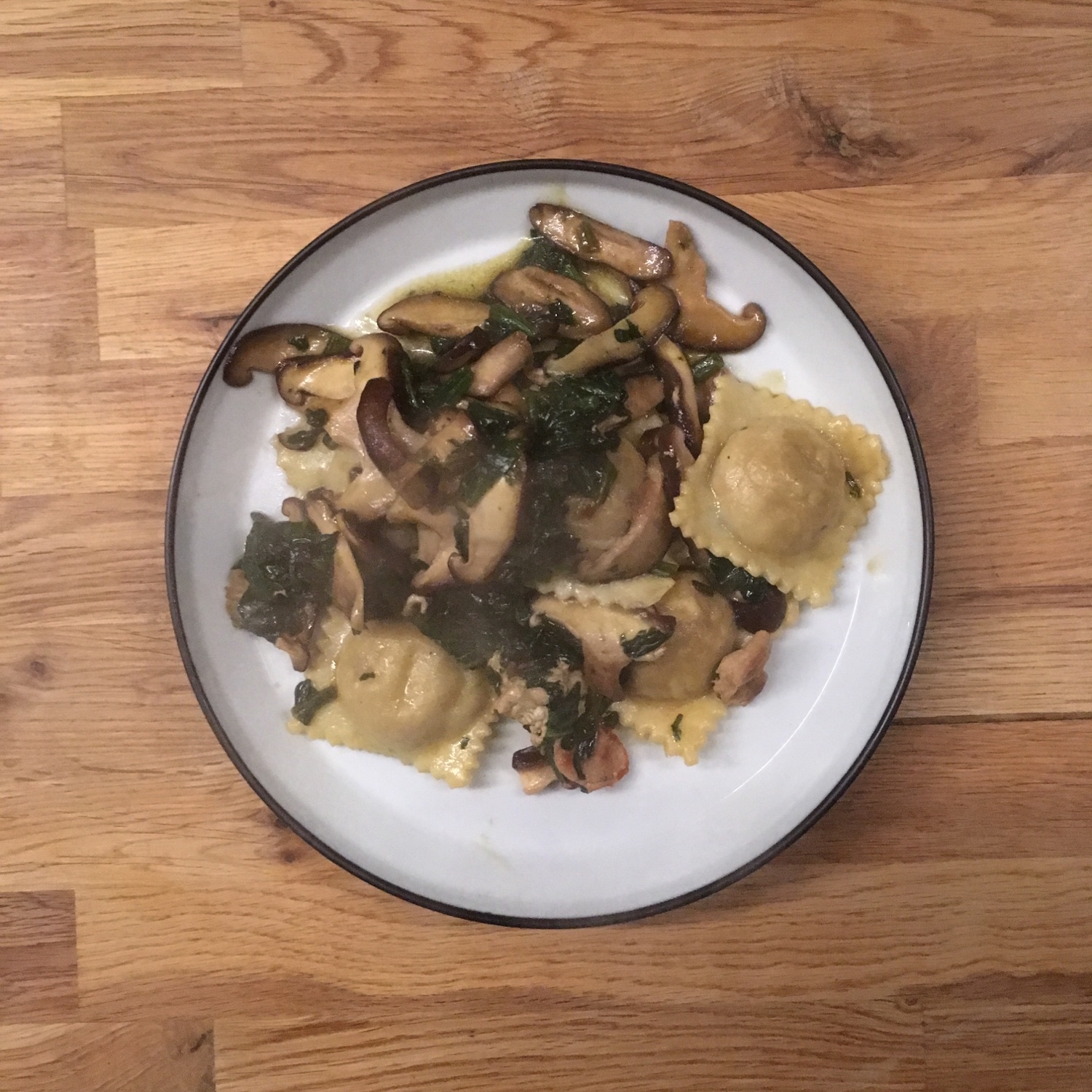

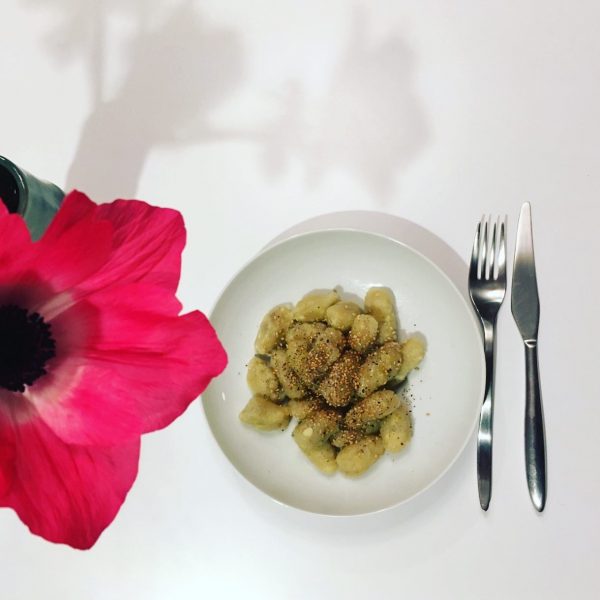
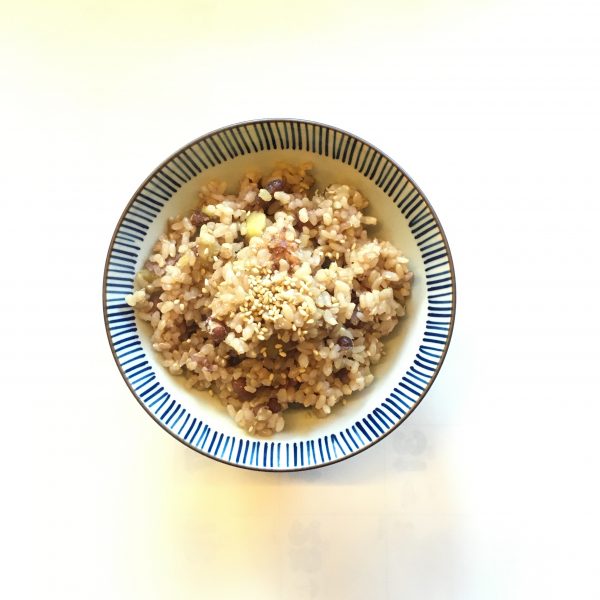
 and the timeliness of me buying and cooking adzuki for the first time. (Really!! Can you imagine it took me 16 years to buy dry adzuki and cook with them!!!!)
and the timeliness of me buying and cooking adzuki for the first time. (Really!! Can you imagine it took me 16 years to buy dry adzuki and cook with them!!!!) That could still count as special occasions, more now that we haven’t traveled for a year, neither plane nor train… As I don’t buy normally mochi rice (but that too may change soon…) this option of recipe was excluded. Of course using regular Japanese rice would work too by slightly steaming longer… but the idea of adding sweet potatoes was just too tempting, I love sweet potatoes so much!!! So here is the recipe, easy as can be and each ingredient perfectly balanced and the flavors harmoniously enhanced. You can replace the brown rice with white rice, but it will change the texture balance of the overall. Taste will still be ok of course!
That could still count as special occasions, more now that we haven’t traveled for a year, neither plane nor train… As I don’t buy normally mochi rice (but that too may change soon…) this option of recipe was excluded. Of course using regular Japanese rice would work too by slightly steaming longer… but the idea of adding sweet potatoes was just too tempting, I love sweet potatoes so much!!! So here is the recipe, easy as can be and each ingredient perfectly balanced and the flavors harmoniously enhanced. You can replace the brown rice with white rice, but it will change the texture balance of the overall. Taste will still be ok of course!